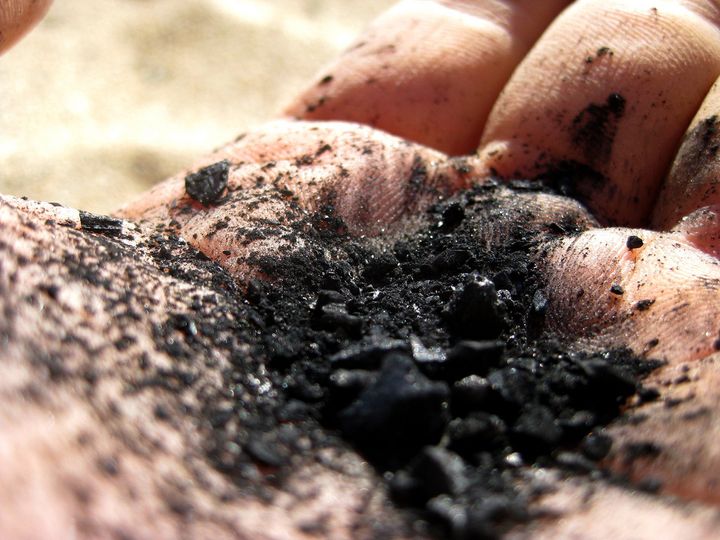The truth about the charcoal beauty trend
By Brid McNulty, January 7 2019

Undoubtedly, you’ve scrolled down Instagram and seen a reality TV star or Insta-model raving about their new charcoal toothpaste or face mask. Charcoal is the new “it’ ingredient on the beauty market at the moment. In reality, we’ve been using charcoal for centuries. Its traditional uses range from fuel, medicine, art, horticulture and purification and filtration. Now hitting the beauty market, you are probably wondering what the low-down on charcoal is. Is this beauty trend just a marketing ploy or are there real benefits and results?
What is charcoal?
Charcoal is made by cooking wood in a low oxygen environment. The charcoal used in beauty products is technically called “activated charcoal’. Manufacturers heat charcoal in the presence of gas which makes it develop internal spaces or “pores’. These pores help activated charcoal trap or absorb chemicals. Just one gram of activated charcoal has a surface area in excess of 3,000m². It is this combined with its ability to absorb chemicals and gases that has made this special ingredient emerge in the beauty market today.
Why the sudden rise to fame?
Whitening toothpaste and anti-blackhead face masks are definitely the most popular charcoal beauty products. These products really grabbed the attention of the public through Instagram influencers and beauty vloggers. They have played a huge role in charcoal’s rise to fame. It is understandable that the first time viewing videos of Insta-stars brushing their teeth with black toothpaste is a scroll back and stare moment.
The video hype does not end there. The black charcoal face mask videos were out of control this year online. The typical content includes a girl leaving the black mask on for too long, with a dramatic and evidently painful peel off. They provide a strangely entertaining and satisfying viewing, with the big reveal of the close-up shot of a sea of individual blackheads stuck to the peeled off mask. There’s also something quirky about charcoal that has made it stand out amongst all of the beauty products out there. Maybe it’s the unusual black colour, the “quick-fix’ aspect, or the unglamorous history of the ingredient.
Black charcoal for whiter teeth – how does it work?
The absorption qualities of activated charcoal in toothpaste make it perfect for stain removal. It can remove the tannins, found in coffee, tea and wine. Charcoal toothpaste comes in powder or paste form. Dip a clean, wet toothbrush into the powdered charcoal, and then, as with the paste charcoal, brush for two minutes and then rinse thoroughly. Some brands recommend you apply it to your teeth and leave it for a few minutes before brushing. Results can vary massively, from instant results to no whitening effect. Although, most reviews say it takes a few weeks of twice daily brushing to see stains removed and some visible whitening.
How does the mask work?
The masks are applied as a cream and, after a few minutes, go bone-dry sticking to your face. After slowly peeling off the mask, commonly you will see little blobs of oil, a.k.a blackheads, dotted all over the mask. And your skin will feel softer, smoother and clearer. However, this is not always the case.
The Truth Revealed
We hate to break it to you, but charcoal face masks aren’t always the quick-fix they’re made out to be. Dermatologists warn that the sticky masks are too aggressive. They aren’t just stripping out blackheads, but an entire layer of skin, essential oils and even your baby hairs. That’s why your skin feels so smooth after. It also throws your oil balance off big time – luckily, this oil replenishes within 30 days. But with continuous use, these masks can really damage your skin and the protective oil layer. What’s even more worrying is the DIY concoctions beauty vloggers are demonstrating – PVA glue and charcoal powder.
Now, the charcoal isn’t exactly the problem here – it’s the stickiness of the mask. You can always try a gentler charcoal face product like Lush’s Dark Angels Cleanser or Clinique’s Pore Refining Solutions Charcoal Mask. And if you do try out the mask trend, don’t leave the mask on any longer than the instructions say.
How about the toothpaste? The results are highly dependent on the concentration of charcoal in the product and the time it’s spent on your teeth. Some dentists claim the ingredient is too abrasive and could damage the top enamel layer. While in the short-term it might remove those pesky coffee stains, we don’t really know the long-term effects. If you test out the whitening power of charcoal toothpaste, do remember to use it as a supplement to your normal dental routine, not a replacement.
Hopping on the charcoal bandwagon?
This ingredient is hailed for more than just its teeth-whitening and blackhead-busting powers – you can find it in shampoo, soap and body scrubs. Did we mention it’s also used in the digestive system? It’s used to treat poisoning, intestinal gas, prevent hangovers and lower cholesterol.
Can’t get enough of these health and beauty trends? Check out our blog for all the latest! And watch this charcoal mask peel-off video, if you dare!
And, hey, fancy a manicure? Why not book one with LeSalon – there’s nothing better than fresh nails!



